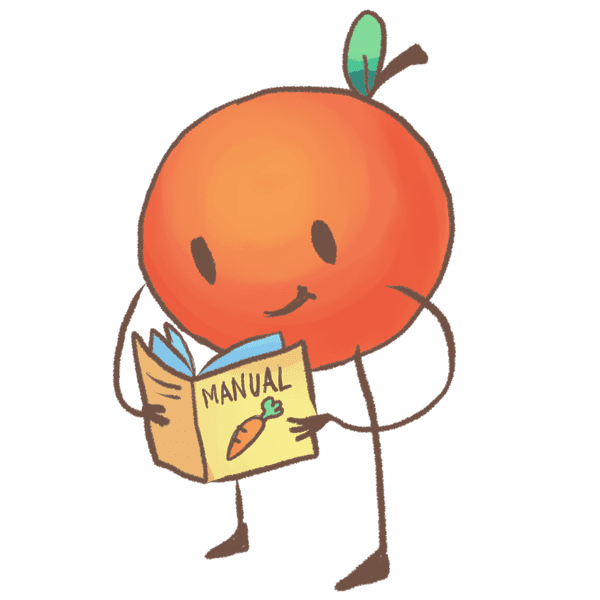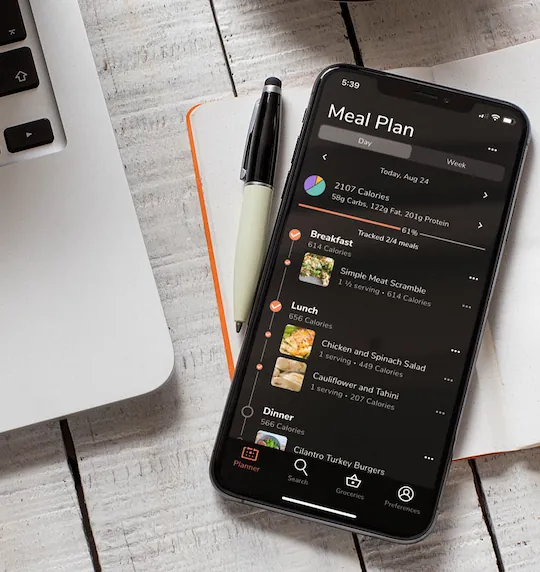Vegan Diet Plan

The primary definition of a vegan diet plan is one that avoids all animal-derived products. This includes not only beef, poultry, pork and fish, but also eggs and dairy products. The vegan lifestyle also includes not using any products made from animals, such as leather or fur.
Many people follow a Vegan Diet Plan for health reasons, seeking to eat more healthful foods. Others will follow a Vegan Diet Plan for ethical reasons, such as concerns over animal welfare. Whatever your reason for choosing a Vegan Diet Plan, EatThisMuch will help you find the perfect daily diet plan to follow.
Benefits of the Vegan Diet Plan
A growing body of scientific evidence indicates that wholesome plant-based diets offer distinct advantages compared to diets containing animal-derived products.
The benefits of a Vegan Diet Plan come from lower intakes of saturated fat, cholesterol and animal protein as well as higher intakes of complex carbohydrates, dietary fiber, magnesium, folic acid, vitamin C and E, and other nutrients.
A balanced Vegan Diet Plan can provide all the nutrients a body needs to thrive. Nutritional deficiencies in Vegan Diet Plans are usually from poor planning. The EatThisMuch meal planner takes the guesswork out of crafting a Vegan Diet Plan, helping you craft a nutritionally complete meal.
Following a Vegan Diet Plan is beneficial in preventing and treating cardiovascular disease, hypertension, diabetes, cancer, osteoporosis, renal disease and dementia, as well as diverticular disease, gallstones and rheumatoid arthritis.
Many people also start a Vegan Diet Plan to lose weight. A vegan diet is also a lifestyle choice, but it is true that people who follow a Vegan Diet Plan are generally leaner than those who do not. Plant-based diets have been consistently associated with reduced body weight in a multitude of interventional trials.
Downsides of a Vegan Diet Plan
Cutting major food groups from the diet, such as meat, can make it harder to get all necessary nutrients. Whether you need a 1,500 calorie diet plan or 2,000 calorie diet plan, EatThisMuch will help you plan nutrient-rich, delicious meals that cover all the body's needs. Meat, poultry and fish supply a lot of protein and omega-3 fatty acids. If you're following a Vegan Diet Plan, nuts and seeds such as flaxseed, chia seeds and walnuts are a place to pick up that essential nutrient.
Consistently eating vegan meals can be difficult. You may be invited to a party, barbecue or restaurant where vegan options are limited or not as filling. Following a Vegan Diet Plan can require more planning and willpower than someone on an omnivorous diet plan.
You're not guaranteed to lose weight simply by following a Vegan Diet Plan. You still need to burn more calories that you consume. A vegan diet can still be filled with excessive calories from sugar and fats. Our EatThisMuch meal planner will help you select a daily calorie intake level and then it will automatically generate Vegan Diet Plans under the calorie limit you set. See a sample 1,500 calorie Vegan Diet Plan
Staple Foods on a Vegan Diet Plan
These days, vegan diets have gained significant popularity. Foods that adhere to a vegan diet plan are everywhere. Home cooks who make vegan meals at home will often have these staple foods at hand.
- Dried lentils
- Cheap, full of protein and other nutrients, dried lentils last a long time in your pantry. This budget-friendly staple doesn't need to be soaked and is great in soups and curry.
- Brown Rice and Quinoa
- Whole-grain rice and protein-rich quinoa make an unbeatable combo
- Avocados
- Avocados are full of healthy fats and add a ton of flavor to dishes.
- Beans
- Dried are best, but canned beans are a staple that can be easily tossed into chilis, soups or other meals. Beans are the vegetarian diet plan's best friend.
- Tomatoes
- A staple ingredient for Italian and many other dishes
- Coconut milk
- Very useful for making curries, soups and sauces, as well as breakfast smoothies.
- Tofu
- A soybean-based meat replacement, tofu absorbs the flavors of the dish and is filled with satisfying protein. Tofu can replace meat in many dishes, such as tacos, chili, stir-fry and more.
- Vegetables
- It wouldn't be a vegan diet without these. Vegetables are delicious and healthy, so load up on leafy greens like kale and spinach, broccoli, cauliflower, carrots, brussel sprouts, bell peppers, squash and more.
Foods to Avoid on a Vegan Diet Plan
You'll want to avoid all animal-derived foods. This includes not just meat, pork and poultry, like on a vegetarian diet plan, but also fish, eggs and dairy. Even honey is considered off-limits by most vegans. However, there are vegan sweeteners available such as maple syrup or molasses that can be used as a substitute.
If you're on a vegan diet plan, you'll have to be careful not to consume foods where such ingredients might be hidden, such as in breads or foods prepared by others. On the EatThisMuch meal planner, you can select a vegan diet plan, and then further customize your diet plan by including or excluding specific foods. By default, our vegan diet planner excludes all animal-based products.
Nutrition on a Vegan Diet Plan
The first step in dieting to lose, maintain or gain weight is to calculate your TDEE (total daily energy expenditure) based on your current weight and exercise level. If your body burns 2,000 calories a day, then consistently eating fewer calories than that will help you lose weight, and eating more calories will cause you to gain weight.
Food is divided into three main macronutrients, all of which contain calories: Protein, carbohydrates and fat. Every diet plan needs to have a suitable amount of each of these three macronutrients. For a Vegan Diet Plan, a realistic macro ratio is 25-30% protein, 40-45% carbohydrates and 30-30% fat.
A standard Vegan Diet Plan might include a diverse mix of whole grains, vegetables, fruit, plant-based protein, and nuts and seeds.
Browse Diet Plans
 Keto Low-carb, high-fat diet focusing on ketosis for energy and weight management
Keto Low-carb, high-fat diet focusing on ketosis for energy and weight management  Vegan Excludes all animal products, emphasizing plant-based foods for health and ethics
Vegan Excludes all animal products, emphasizing plant-based foods for health and ethics  Vegetarian Plant-based diet including dairy and eggs, avoiding meat for health and ethics
Vegetarian Plant-based diet including dairy and eggs, avoiding meat for health and ethics  Paleo Emulates ancient diet with whole foods, free of processed items and grains
Paleo Emulates ancient diet with whole foods, free of processed items and grains  Mediterranean Rich in fruits, vegetables, fish, and olive oil for a balanced, heart-healthy diet
Mediterranean Rich in fruits, vegetables, fish, and olive oil for a balanced, heart-healthy diet  Low Carb Reduces carbohydrate intake, focusing on proteins and fats for energy
Low Carb Reduces carbohydrate intake, focusing on proteins and fats for energy  Low Fat Limits fat consumption, emphasizing lean proteins, grains, and vegetables
Low Fat Limits fat consumption, emphasizing lean proteins, grains, and vegetables  High Protein Prioritizes protein intake for muscle growth and repair, with balanced nutrients
High Protein Prioritizes protein intake for muscle growth and repair, with balanced nutrients  Gluten Free Avoids gluten, suitable for celiac or gluten sensitivity, focusing on alternative grains
Gluten Free Avoids gluten, suitable for celiac or gluten sensitivity, focusing on alternative grains  Other See how to follow other popular plans like Whole30, Low FODMAP, Pescetarian, and more
Other See how to follow other popular plans like Whole30, Low FODMAP, Pescetarian, and more
As Seen In
Available on Web, iOS, and Android
Eating smart has never been easier
Follow any eating style or create your own
You can customize popular eating styles like vegan and paleo to match your needs and preferences.
Reduce food waste
Planning ahead means less produce going bad in the fridge. Add what you already own to the virtual pantry and our algorithms will use it up with priority.
Take the anxiety out of picking what to eat
Make the important decisions ahead of time and on your own schedule. Then there's nothing to worry about when it's time to eat.
Automatic grocery lists
No more skipping meals because you're missing ingredients. Review your meals for the week and the grocery list automatically updates. Then get it delivered with our Instacart or AmazonFresh integration.
What Our Users Say

"Eat This Much not only helps me hit my macros, but also makes sure I'm not eating the same bland thing every day. I've lost 35 lbs over the past year, and with ETM, I'm eating and performing better than ever."
Sam Konowich @samkonthemankon

"I found out about Eat This Much and lost 32 lbs in 6 months! Now I'm a fit over 50 female in amazing condition, and this site is what I refer to several times a day to ensure I eat properly and manage my macros."
Meg M., awesome ETM user

"After being diagnosed with sleep apnea and high blood pressure, I picked up this app and followed the nutrition plan religiously. Since then I've lost over 40lbs. I still have 20lbs or so to go before I get to where I really want to be, but I'm thankful for the life this all has helped me achieve."
Sam A., awesome ETM user

"I started tracking my weight in April when I was 184lbs. In May I signed up for Eat This Much and immediately appreciated being able to just cook the menu and not worry about what to have for dinner. By November I was down to 155lbs and I still use Eat This Much today!"
Ben Kutil, Product designer
Disclaimer: These are real testimonials, but we're required to tell you that results aren't guaranteed. Eat This Much is a tool for planning your meals, and your success will depend on adhering to your planned meals and nutrition goals. Only you can make yourself improve your diet, but we'll be here to help.
Eat This Much is not a substitute for professional medical advice. You should consult with a medical professional before making significant changes to your diet.
For Health & Fitness Professionals
Powerful, fast meal planning to level up your business.



